Kieran Farr
Beneath the streets of San Francisco’s Mission District once flowed a rich network of natural waterways. A system of creeks, lagoons, and acres of tidal wetlands oscillated their salinity with the tides, swelled and contracted with the seasons, and served as a naturally modulating microbiome for countless forms of life at the interface between land and sea. [1]
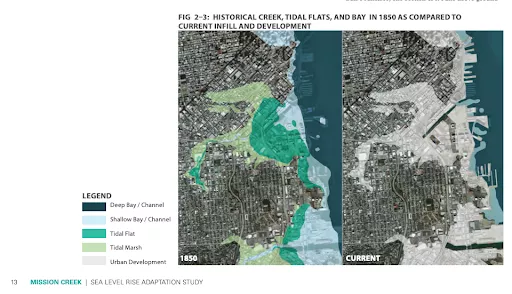
Historical creek, tidal flats and bay in 1850 as compared to current infill and development. 2016 Courtesy SPUR. [1]
The first known people in the Bay Area were the Ohlone speaking tribes such as the Ramaytush in San Francisco. They lived as a partner with this ecosystem for over 10,000 years. But a brief 300 years ago, the Spanish and Americans arrived and changed the land and waterways for the worse. The Spanish began by diverting freshwater for farming and light industrial use, but it was the Americans who shifted environmental engineering into high gear after 1848, filling in land to make way for newly surveyed plots hosting heavier industries like woolen mills, tanneries, glassworks, steelworks, breweries, textiles, and railroads to connect them. [2]
After reaching a peak with polluted pools of water known locally as the “Mission Death Swamp” in the late 1800s, the City finally created a below-ground sewer system combining the wastewater with stormwater runoff. Today, San Francisco is the only remaining coastal city in California with a combined sewer system that collects and treats both wastewater and stormwater in the same network of pipes. [3]
Despite our attempts to bury the waterways, the water returns to remind us of its presence each time there is a heavy storm. In December 2022, severe flooding devastated parts of the Mission District, highlighting the urgent need for comprehensive water management strategies. The images from that day serve as a stark reminder of the area's vulnerability. This disaster not only caused significant property damage but also disrupted the lives of many residents and businesses. [4]
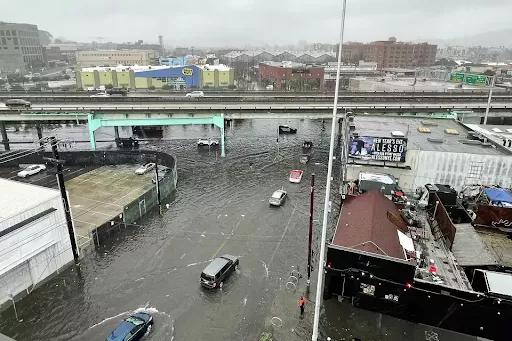
Flooding under the Central Freeway dividing the Mission and SoMa in San Francisco on Dec. 31, 2022 [4]
As a response to frequent flooding in the Mission District, the California Water Resources Control Board issued an Abatement Order to the San Francisco Public Utilities Commission (SFPUC) to “abate the nuisance” of flooding by 2027. The SFPUC responded by proposing the “Folsom Stormwater Improvement Project” (FASIP), which would install a larger sewer line in the heart of the Northeast Mission Industrial Neighborhood with a combination of open trenching and tunnel boring. [5]
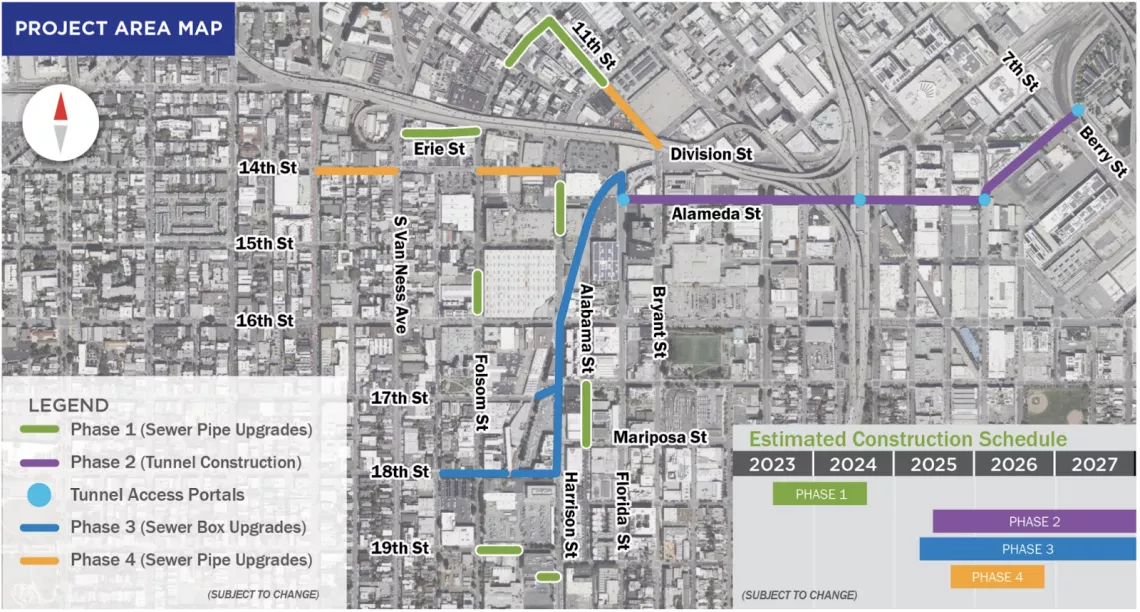
Project Area Map of the Folsom Area Stormwater Improvement Project (FASIP), Source: SFPUC San Francisco [6]
But water experts disagree that a “bigger pipe” is the best solution to flooding that has existed for thousands of years. The Sierra Club SF Bay Chapter Water Committee reviewed these plans and interviewed officials, hydraulic engineers, and community members, and found significant issues with the SFPUC proposed response.
In March, the Sierra Club issued a formal complaint [7] urging the City to take a more holistic “green infrastructure” approach to manage the area’s water systems using natural methods while also restoring acres of natural wetlands to the vulnerable Mission communities who have expressed interest in more open green space.
The Sierra Club has raised several key concerns about the current approach:
- Lack of a Long-Term, Holistic Solution: The project focuses on short-term engineered fixes rather than comprehensive, nature-based “green infrastructure” strategies that address the fundamental issues of water management and environmental sustainability.
- Insufficient Community Involvement and Transparency: There has been minimal public consultation and inadequate notification about the project’s impacts. This lack of transparency undermines trust and prevents meaningful community engagement.
Instead of proposing a specific solution, the SF Group followed the Jemez Principles and began direct engagement with the community through a series of outreach events with residents, business owners, community leaders, historians, environmental experts, architects, and more. These events spotlighted the rich history of waterways in the Mission District while fostering conversations about what other solutions might help with flooding while also addressing other community concerns such as lack of access to green & open spaces for children and families in the neighborhood.
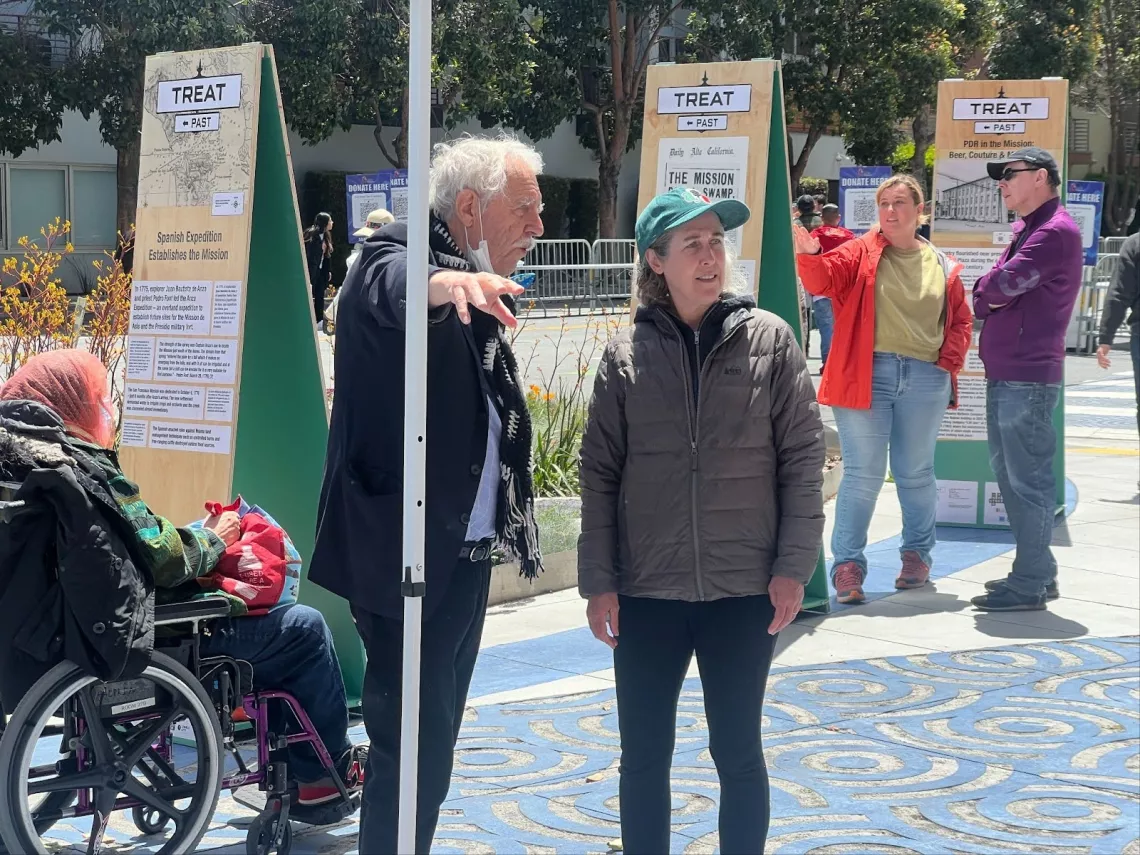
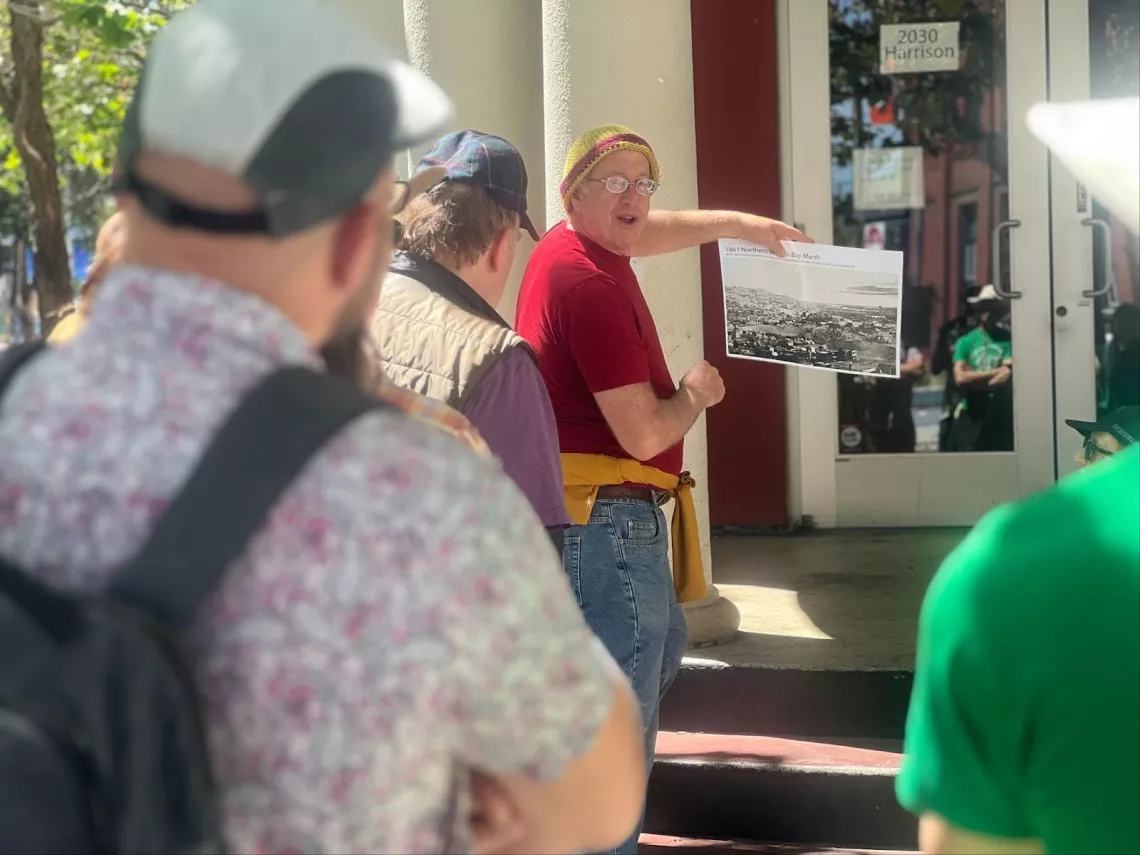
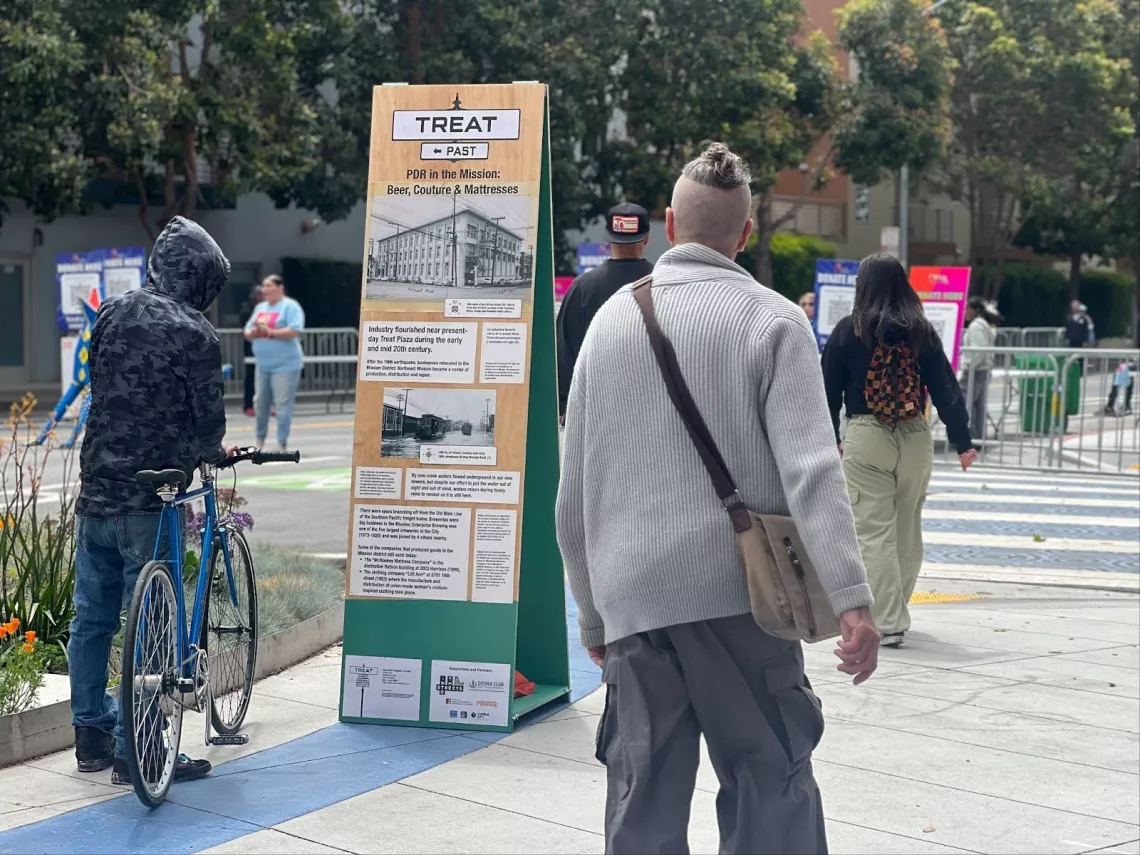
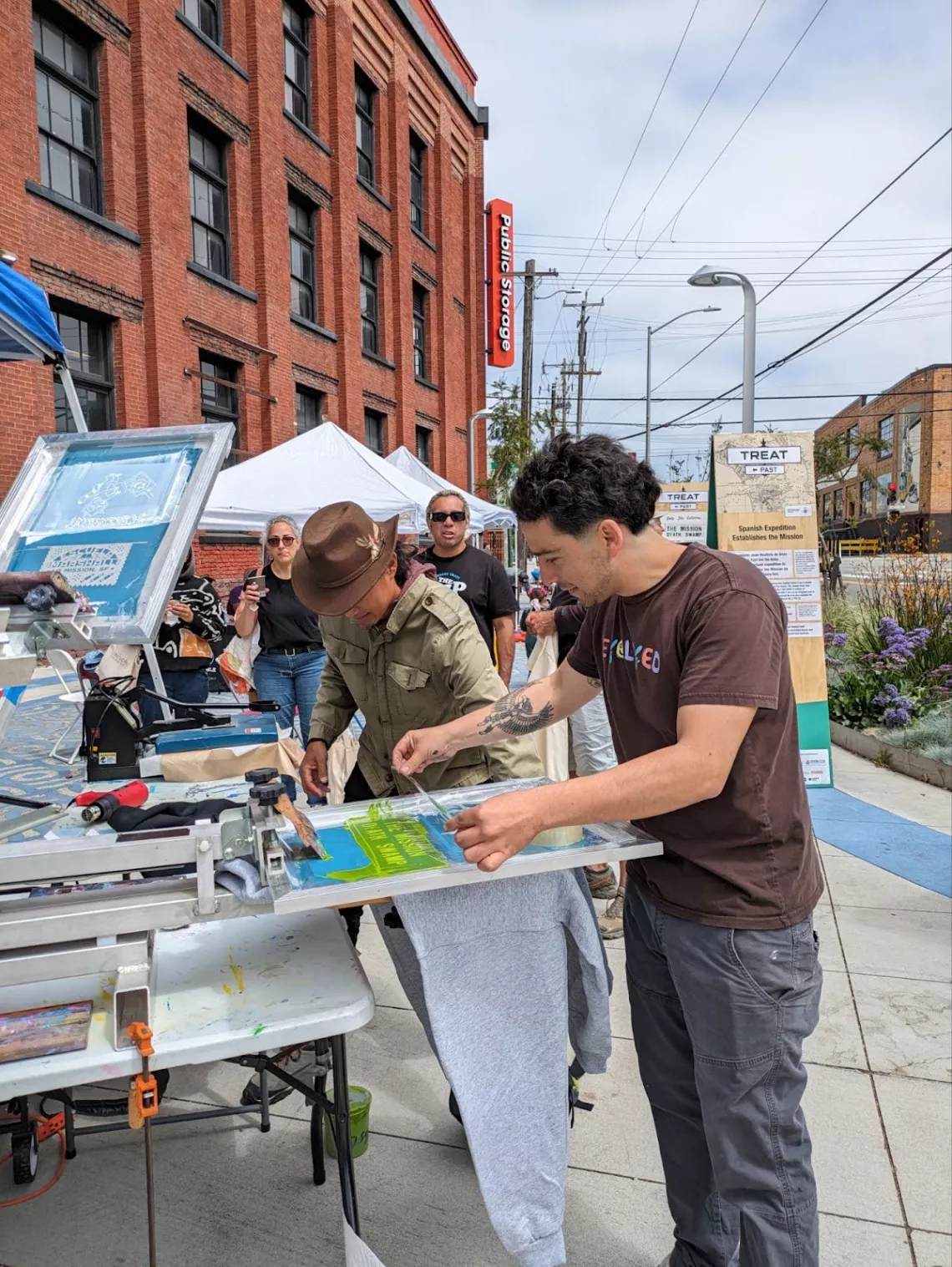
The Sierra Club SF Group partnered with San Francisco’s Into the Streets Nonprofit for community outreach in the Northeast Mission Neighborhood to explore the history of Mission waterways and share green infrastructure alternatives to stormwater resilience.
Thousands of people engaged with the open-air history “Treat PAST PRESENT FUTURE” exhibit featuring 7-foot tall wooden interpretive panels sharing the history of the Mission Creek waterways from Indigenous peoples to Spanish colonization, modern-day industrialization, and beyond. Volunteers and partner organizations led conversations with community members to explore what the neighborhood could look like with more resilient, green stormwater infrastructure.
Instead of burying pipes underground to mix stormwater overflows with wastewater, what if we were able to separate storm and gray water into a natural above ground greenway that daylights the historic creek along its original path with open space access and mobility improvements for the surrounding neighborhoods?
Not only are green infrastructure solutions to stormwater drainage practical and feasible, the practice is employed by coastal cities around the world. In some cases these solutions have been employed for centuries as in the case of the network of canals in the Netherlands. More recently cities are choosing to restore or “daylight” their waterways, as was the case for Cheonggyecheon river in South Korea and the ongoing restoration of the Duwamish River in Seattle.
Working with our partners Terrain Studio and Multistudio we were able to incorporate this community feedback into conceptual drawings to illustrate how these neighborhood requests can mix with hard infrastructure requirements to create an outcome that benefits everyone. Even small Right of Way streets can accommodate a rich ecosystem for restoring natural vegetation and wildlife.
The pictures below show a few different examples of potential “asphalt to creek” treatments along the proposed site of the Folsom Stormwater Project.
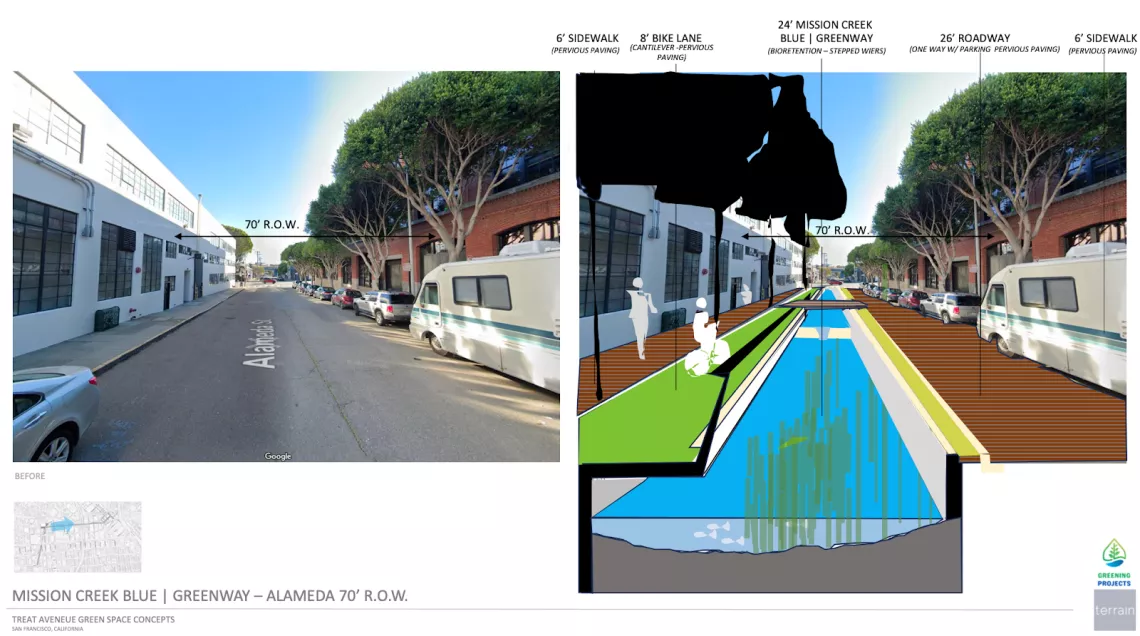
A typical cross-section example of conversion from traditional street with underground stormwater drainage to a shared use greenway while still maintaining existing uses by Scott Slaney from Terrain Studio. Illustration for prototype and discussion purposes, not intended as a final engineering design.
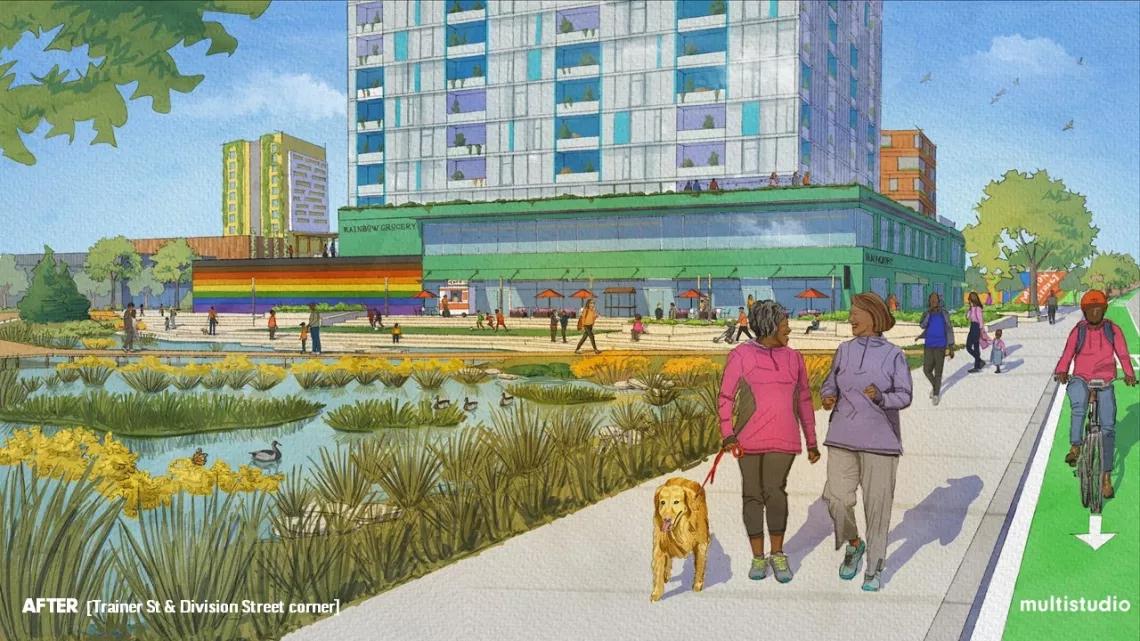
An example of a conversion from asphalt and concrete parking lots to restorative waterways and open spaces from Multistudio, BASE, and Badiner Urban Planning. Illustration for prototype and discussion purposes, not intended as a final engineering design.

Converting an unmaintained street of broken asphalt and polluted wastewater to green, open spaces for the community from Terrain Studio for Treat Plaza North. Illustration for prototype and discussion purposes, not intended as a final engineering design.
We’re proud that the Sierra Club's complaint and community outreach around the proposed Folsom Stormwater Project have ignited a vital discussion about the future of water management in San Francisco's Mission District. This project is symbolic of the systemic issues facing the beleaguered SFPUC and the City’s combined sewer system – time and again the City chooses a short-term solution instead of investing the necessary resources to create a natural, robust, long-term solution to stormwater runoff and overflow.
But the challenge is just beginning. Stay tuned to our blog to learn more about the next phase of this project and other issues affecting San Francisco’s water management policies.
Sources:
[1] https://www.spur.org/sites/default/files/2016-09/Mission_Creek_Sea_Level_Rise_Adaptation_Study.pdf
[2] Elizabeth Creely, Treat PAST PRESENT FUTURE, Stand 3 - 1848 - 1920, Panel B: 1878 - 1920, https://www.treatfuture.com/#download-exhibit
[3] https://www.sfpuc.org/about-us/our-systems/sewer-system/our-combined-sewer
[4] Flooding under the Central Freeway dividing the Mission and SoMa in San Francisco on Dec. 31, 2022 photograph by Gerry Díaz https://www.sfgate.com/travel/article/why-san-francisco-mission-floods-17708686.php
[5] https://www.waterboards.ca.gov/sanfranciscobay/board_decisions/adopted_orders/2021/R2-2021-0021.pdf
[6] https://sfpuc.org/construction-contracts/construction-projects/folsom-area-stormwater
[7] https://docs.google.com/document/d/1Gl8-x-Gjq5X9rmoDvBeWhXWc-Ec3nYJz/edit